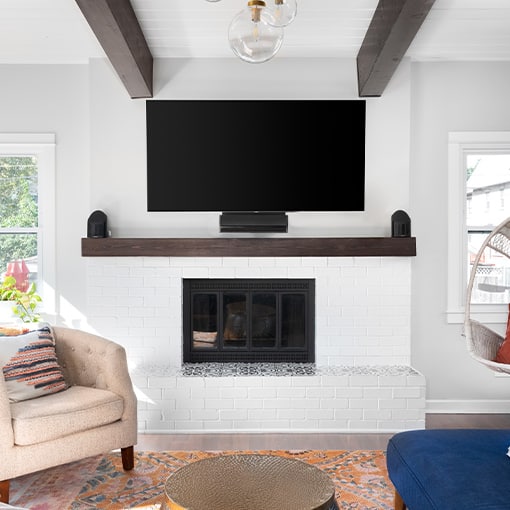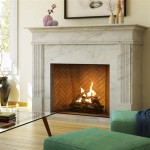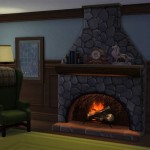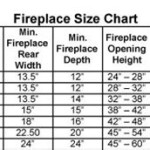Mounting a TV Over a Fireplace: Considerations and Procedures
Mounting a television above a fireplace is an increasingly popular design choice, offering a streamlined aesthetic and conserving wall space. However, this installation requires careful planning and execution to ensure both the safety of the equipment and the longevity of the viewing experience. This article will address key considerations, potential challenges, and recommended procedures for successfully mounting a TV over a fireplace.
Assessing the Suitability of the Fireplace and Surroundings
Before proceeding with any installation, a thorough assessment of the fireplace and its surrounding structure is critical. The primary concern revolves around heat exposure. Televisions are electronic devices sensitive to high temperatures, and prolonged exposure can significantly reduce their lifespan or cause immediate damage. The intensity of heat emanating from the fireplace varies greatly depending on the type of fireplace (wood-burning, gas, or electric) and its usage frequency.
For wood-burning fireplaces, the heat output is considerably higher and more unpredictable than gas or electric alternatives. Open fireplaces without proper enclosures present the greatest risk as they allow flames and hot air to directly vent upwards. Even with a glass enclosure, significant radiant heat can still affect the area above the mantle. In such cases, mounting a TV directly above the fireplace is generally discouraged. A viable alternative might include recessing the TV into the wall further up, providing a buffer zone against the heat or incorporating a more substantial, non-combustible mantle shelf to deflect heat.
Gas fireplaces produce less heat than wood-burning options and often have built-in venting systems that redirect heat away from the wall. However, even with these features, prolonged use can still raise the temperature above acceptable levels. Electric fireplaces, while producing heat, generally do so at a lower intensity and with greater control. The key factor here is the venting location; if the heat is directed towards the wall above, it will still pose a threat.
Beyond heat concerns, the structural integrity of the wall is also paramount. Many fireplaces are constructed with brick, stone, or concrete, which can present challenges for cable routing and mounting bracket installation. These materials require specialized drilling equipment and anchoring techniques to ensure a secure and stable mount. Consider the type of wall (drywall, plaster, brick, stone) during the planning process. Consult with a professional if any uncertainty arises about the wall's structural capacity or the proper installation methods.
Finally, consider the viewing angle. Mounting a TV too high can lead to neck strain and an uncomfortable viewing experience. The ideal viewing height places the center of the screen at eye level when seated. Assess the height of the fireplace and the space available to determine if a comfortable viewing angle can be achieved. If the fireplace is particularly tall, explore alternative mounting locations to avoid excessive upward tilting of the TV, which can distort the image.
Selecting the Appropriate Mounting Hardware and Components
Choosing the correct mounting hardware is crucial for safety and functionality. The selection process depends on several factors, including the TV's weight and screen size, the wall material, and the desired range of motion. Flat mounts offer the most low-profile installation, keeping the TV close to the wall. Tilting mounts allow for slight adjustments to the viewing angle, which can be helpful when the TV is mounted higher than ideal. Full-motion mounts provide the greatest flexibility, allowing the TV to be swivelled, tilted, and extended for optimal viewing from various angles within the room. These are particularly useful in open-concept spaces.
Prior to any purchase, confirm the TV's VESA (Video Electronics Standards Association) mounting pattern. The VESA pattern is a standardized set of screw holes on the back of the TV that determines compatibility with mounting brackets. The dimensions of this pattern are usually expressed in millimeters (e.g., 400x400 mm). This information is typically found in the TV's manual or on the manufacturer's website. Mismatching the VESA pattern will result in an inability to securely attach the TV to the mount.
The weight capacity of the mount must exceed the weight of the TV. Overloading the mount creates a significant safety hazard and can lead to structural failure. It is prudent to choose a mount with a safety margin of at least 20% above the TV's weight. Check the manufacturer's specifications carefully and ensure that the mount is rated for the intended application.
For masonry walls like brick or stone, specialized anchors are required to provide a secure hold. Standard drywall anchors are insufficient and will likely fail under the weight of the TV. Use wedge anchors, sleeve anchors, or concrete screws designed for masonry applications. The diameter and length of the anchors should be chosen based on the weight of the TV and the thickness of the brick or stone. Follow the manufacturer's instructions carefully when installing these anchors, ensuring they are properly embedded and tightened.
In addition to the mount itself, consider the necessary cables and accessories. HDMI cables are essential for transmitting audio and video signals from source devices (e.g., cable box, Blu-ray player) to the TV. Choose HDMI cables that are of sufficient length to reach the source devices without excessive slack. Consider the need for power cables, network (Ethernet) cables, and any other cables required to connect to external devices. Organize and conceal these cables behind the wall to maintain a clean and uncluttered appearance.
Executing the Installation Process with Precision
Safe and accurate installation requires careful planning and execution. Begin by gathering all necessary tools and materials, including a stud finder, level, drill with appropriate masonry bits (if needed), screwdriver, tape measure, pencil, and safety glasses. Before drilling, it is imperative to locate any electrical wiring or plumbing within the wall to avoid accidental damage. If unsure about the location of utilities, consult with an electrician or plumber. It may also be beneficial to use wire and pipe locators which are readily available.
Once the mounting location is determined and confirmed to be structurally sound, mark the position of the mounting bracket on the wall. Use a level to ensure the bracket is perfectly aligned. For drywall installations, use a stud finder to locate the wall studs and secure the bracket to the studs for maximum support. If studs are not ideally positioned, use drywall anchors between the studs to distribute the weight evenly. For masonry walls, drill pilot holes using a masonry drill bit and insert the appropriate anchors. Ensure the anchors are securely tightened according to the manufacturer's instructions.
After the mounting bracket is securely attached to the wall, carefully lift the TV and attach it to the bracket. Most mounts have a locking mechanism to prevent the TV from accidentally falling off. Double-check that the locking mechanism is engaged and that the TV is securely in place. Concealing the cables is critical for a clean aesthetic. Consider running the cables through the wall using a cable management system or conduit. This requires drilling holes in the wall and routing the cables behind the drywall. Alternatively, use cable covers to conceal the cables along the surface of the wall.
After the TV is mounted and the cables are concealed, connect all necessary cables to the TV and source devices. Power on the TV and verify that all inputs are working correctly. Adjust the viewing angle as needed to ensure a comfortable and optimal viewing experience. Secure any remaining loose cables with cable ties or Velcro straps to prevent them from dangling behind the TV. Once complete, conduct a thorough inspection to ensure the installation is secure and aesthetically pleasing. Test the fireplace while monitoring the temperature above the mantle to ensure it remains within safe operating parameters for the television.
If there is any uncertainty or lack of confidence in performing the installation, it is highly recommended to engage a professional installer. Professional installers have the expertise, experience, and tools necessary to ensure a safe and reliable installation. They can also provide advice on choosing the appropriate mounting hardware and cable management solutions.

Can I Mount My Tv Above The Fireplace

3 Alternatives To Mounting Your Television Above The Fireplace Avs

Can I Mount My Tv Above The Fireplace

Is It Safe To Mount Your Tv Above The Fireplace Chimney And Wildlife

Safely Mount A Tv Above An Electric Fireplace Touchstone Home S Inc
Can I Mount A Tv Over My Fireplace Heatilator

How To Mount A Tv Over Fireplace Vertical Chimney Care

Tv Wall Mount Installation With Wire Concealment Over Fireplace

Things To Consider Before Mounting Your Tv Over Fireplace

Never Mount Your Tv Above A Fireplace Here S Why Slashgear








